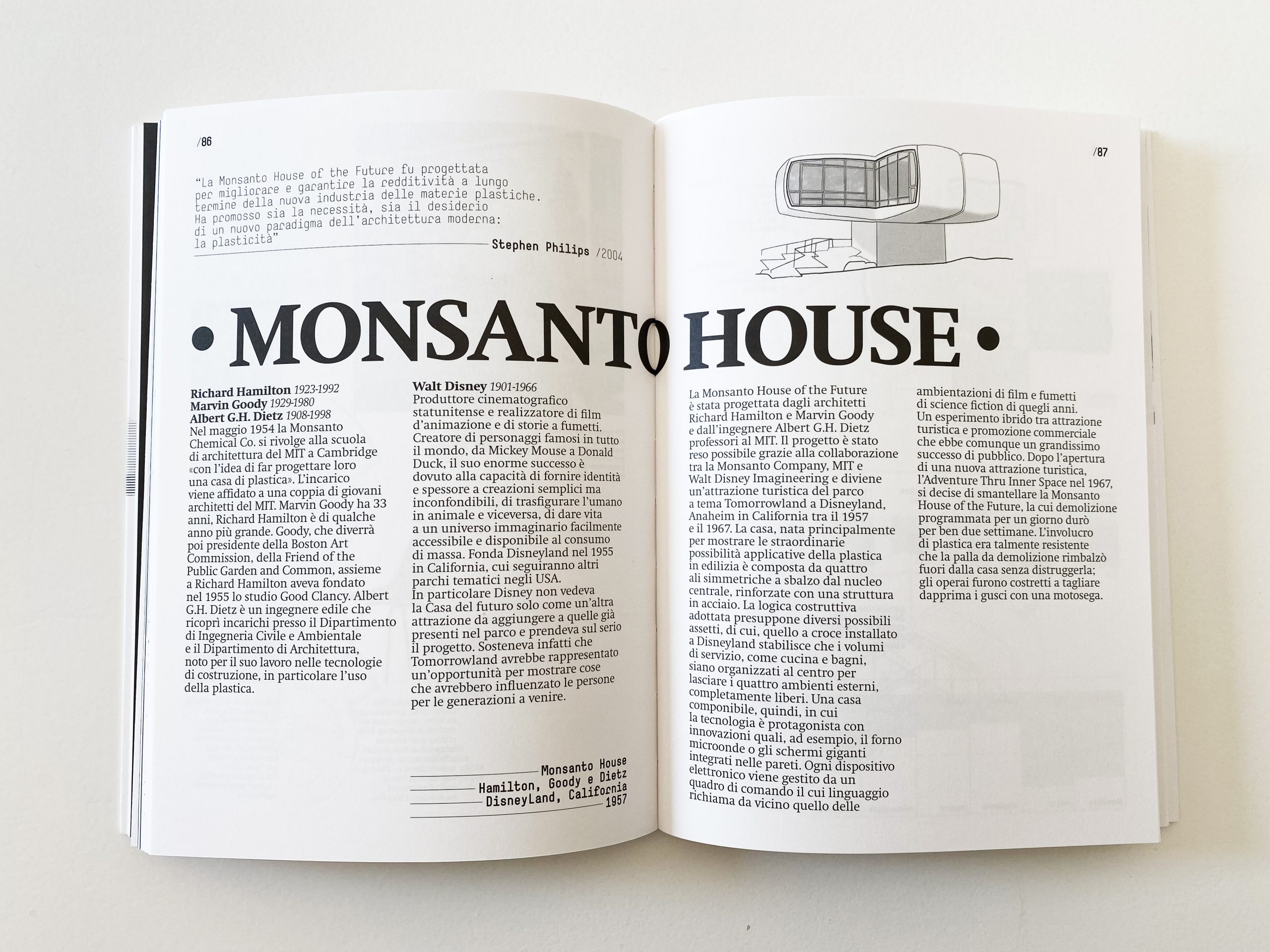The aim of this volume is to verify the assumptions inherent in the projects for the houses of the future, developed in the 50s of the twentieth century, to build the imagined identity of contemporary architecture.
The Past that simulates the Future becomes the key to the Present.
The idea behind this work is that it is possible to define the characteristics of contemporaneity through projects that, in a specific historical period, project our society into a context 50 years into the future.
The proposed volume focuses on the themes of flexibility in domestic living, mobility and temporariness, combining extra-disciplinary cultural references, technical innovation and universalist aspirations with the need to find a popular and transmissible form associated with the concept of living.
The story of a new habitat imagined for the future that has become our present, is therefore confronted with a double need: to conceive new domestic models and make them understandable and attractive to users who had yet to be born when their home was designed.
Through detailed project sheets accompanied by three-dimensional graphic reproductions, some recurring characters related to themes such as: construction technologies, plant technologies, materials and finishes, spatial organization, management of functional programs, identity and characteristics of the client will be taken into consideration.
The contribution is aimed at raising the awareness of designers and students of disciplines related to the project, from architecture to interior design, towards the themes of contemporary living, understood as a cultural context that has roots in history, but is confronted with habits and forms of relationality in constant evolution.








